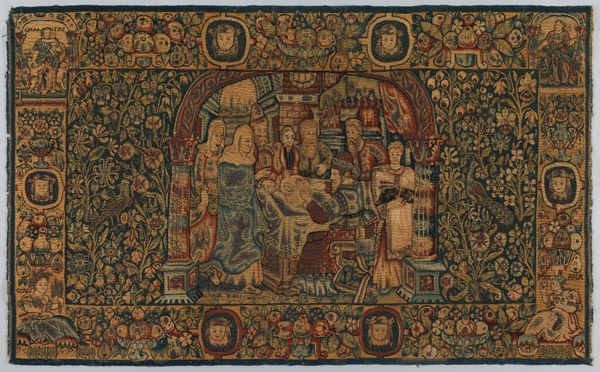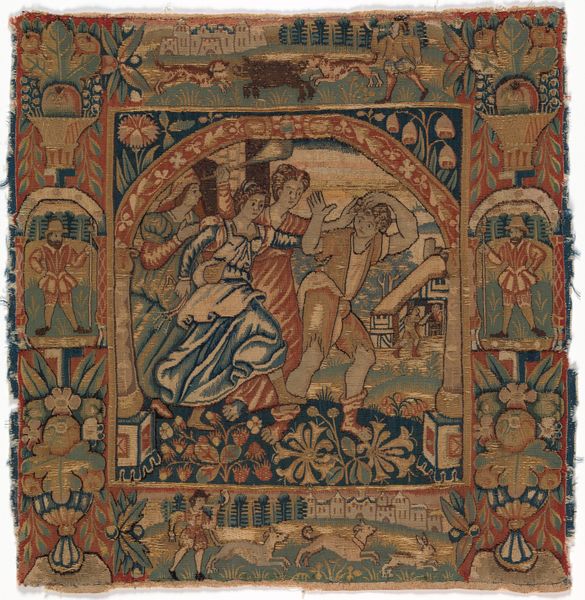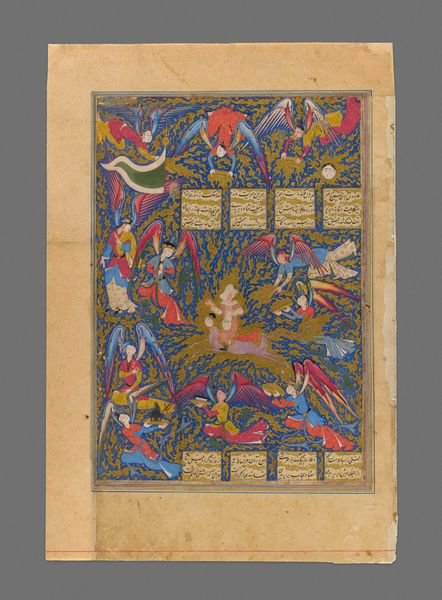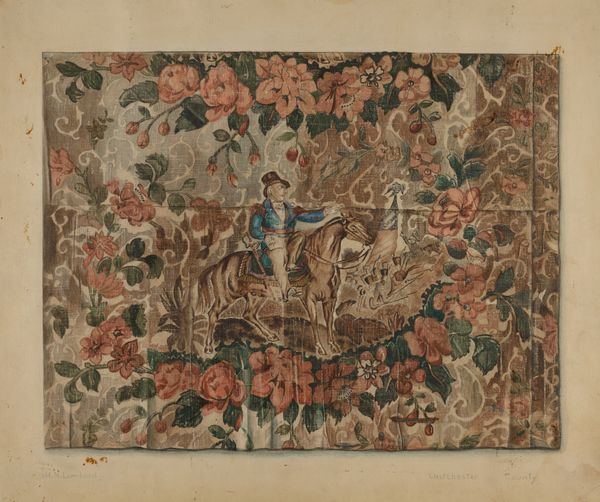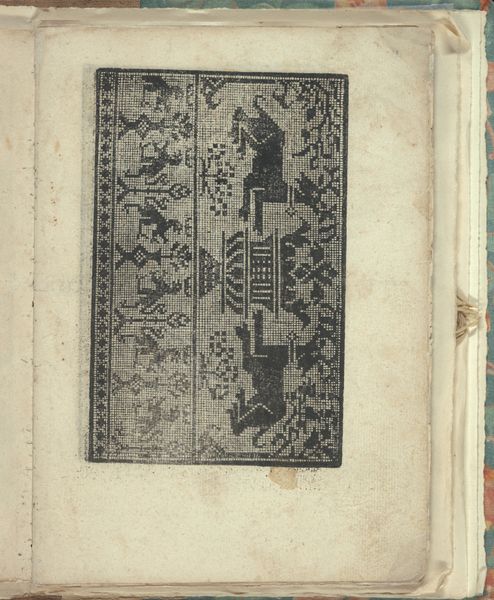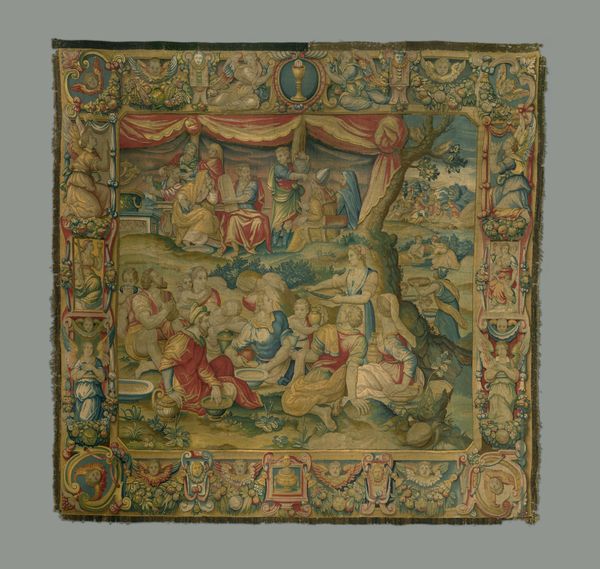
Dimensions: H. 8 1/2 x W. 11 3/4 inches (21.6 x 29.8 cm)
Copyright: Public Domain
Curator: At first glance, I’m struck by its miniature theatricality. Is this a weaving? Editor: Indeed. We're looking at "The Sacrifice of Isaac," a textile work that was created sometime between 1556 and 1618. It’s currently held here at the Metropolitan Museum of Art. Curator: That dating makes sense, given its biblical subject matter and decorative, almost tapestry-like quality. I am really curious about the hands involved in its making. It’s hard to believe that all of the minute details – those flower borders and the patterning on Abraham’s robe – were achieved through weaving or perhaps needlework of some kind. I wonder, too, where it would have been displayed. Was this a functional textile or a piece displayed to signal wealth and piety? Editor: That's a great point about display and status. The story it depicts would have been extremely resonant at a time of religious upheaval and wars of faith. The composition and presentation of Isaac—a symbol of innocence—reminds me of a stage production of salvation. I find myself wondering about the commissioning context and if the piece acted as a didactic tool in domestic settings. Curator: Yes, it certainly pushes against modern boundaries between "fine" art and craft. To me, it reads less like an assertion of individual artistic genius and more like evidence of highly skilled artisanal labor that produced items affordable enough for non-elite domestic display. Even now, there's something immediately accessible about it, as opposed to the kinds of paintings commissioned by royalty or high church officials. Editor: That’s fascinating—you see the labor, and I see the sociopolitical environment of religious teaching. In truth, though, I feel that we’re circling the same point from different directions, seeing a complex intertwining of labor, belief, and social forces within a specific historical context. Curator: Exactly! By examining these factors together, we see not just a pretty picture of the past but a textured artifact imbued with rich social history. Editor: I agree entirely. Now, let’s delve into another piece.
Comments
No comments
Be the first to comment and join the conversation on the ultimate creative platform.

